Types of bath explained — this is how to choose the perfect style of tub
The seven types of bath every homeowner should know and how to choose the best style for your space
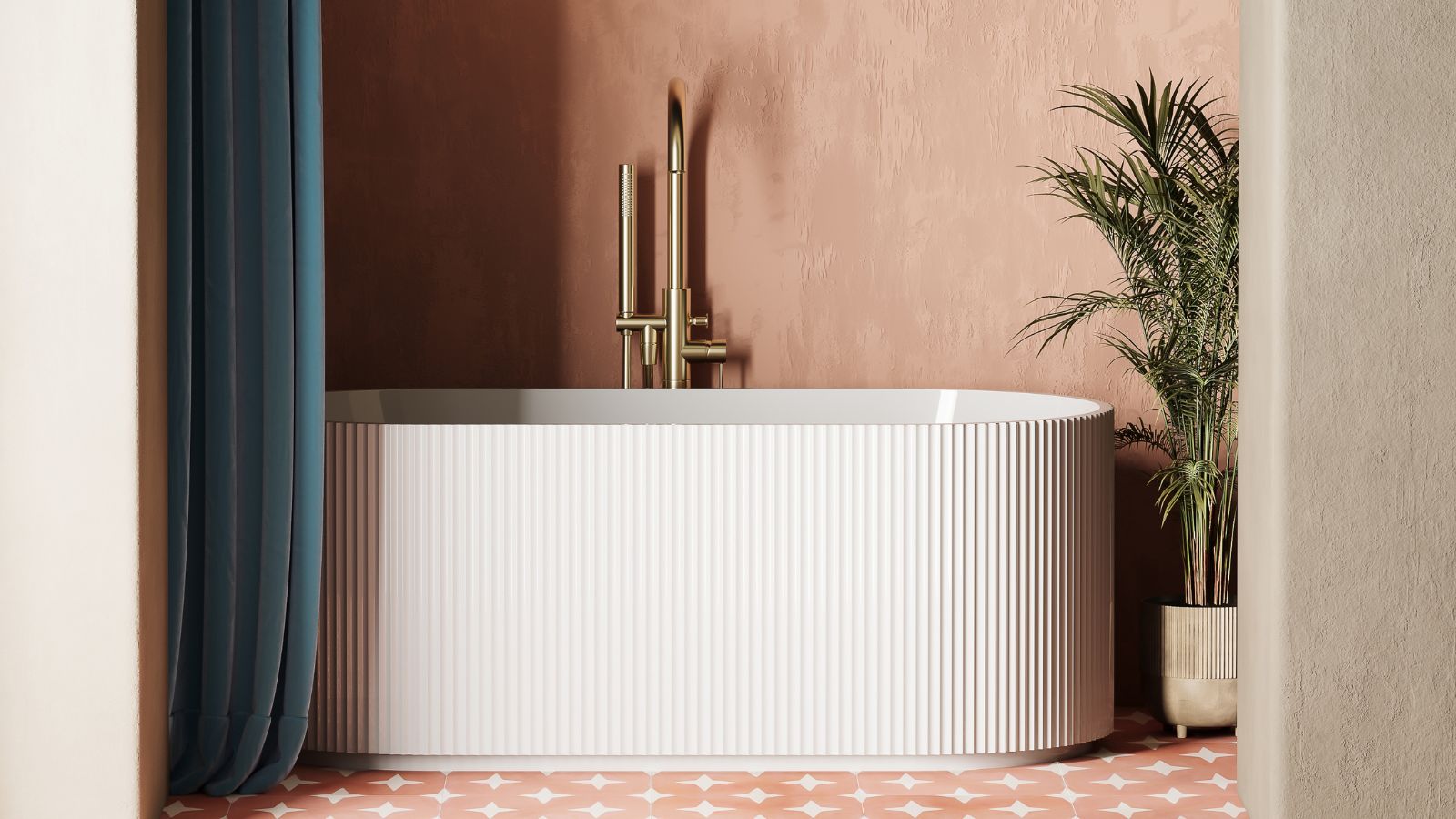
With so many types of bath to choose from, selecting the right style to suit your bathroom design can feel like a challenge. From deep, freestanding tubs for long, luxurious soaks to space-saving shower-bath designs made for busy mornings, the perfect bath is out there, you just need to know what to look for.
Whether you’re planning a full bathroom renovation or simply upgrading your current tub, understanding the different types of bath on offer will help you make the most of your space and daily routine.
Popular types of bath explained
Below, we’ll guide you through the most popular bath types available to help you find the one that’s just right for your space.
Standard baths
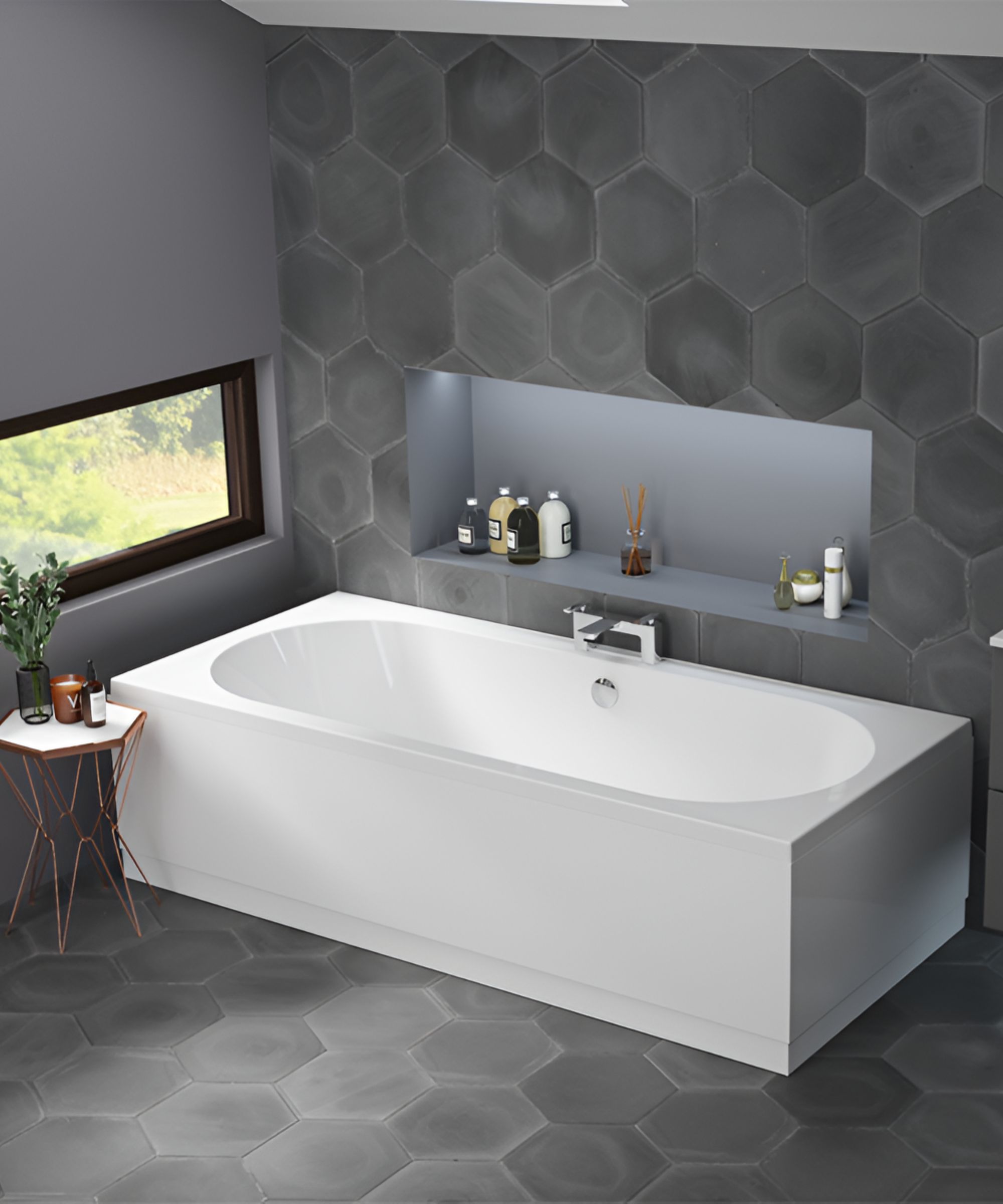
Standard baths are the most common type found in UK homes. They are typically rectangular in shape and installed against one or more walls.
The advantages of standard baths
“The classic rectangular shape and range of sizing offers great versatility, particularly when looking at bath positioning, even in the smallest of spaces,” says Jamie Heath, bathroom and plumbing expert at Build & Plumb.
Available in both acrylic and steel, standard baths come in single-ended and double-ended versions. “Single-ended baths are ideal for shower-over-bath setups,” Jamie explains. “They have the taps and plug at one end, leaving the other end sloped for comfortable bathing.” Double-ended versions place the taps centrally, with both ends sloped, allowing a more balanced and spacious feel.
Standard baths are also among the most affordable, making them a reliable option for bathroom renovations on a budget.
Important considerations
While they tick plenty of practical boxes, standard baths don’t offer the same visual impact as freestanding or statement bath designs. So, if you’re looking to elevate the look of these tubs, consider opting for unique materials, colourful bath panels, or stylish wall-mounted taps to give them a more contemporary edge.

Jamie is a highly experienced manager with over 24 years of expertise in the Plumbing & Heating sector. Having worked for both national and regional merchants, he now brings his knowledge to Build & Plumb, an online retailer, supplying top-quality products for DIYers, renovators, and trade professionals alike.
Freestanding baths
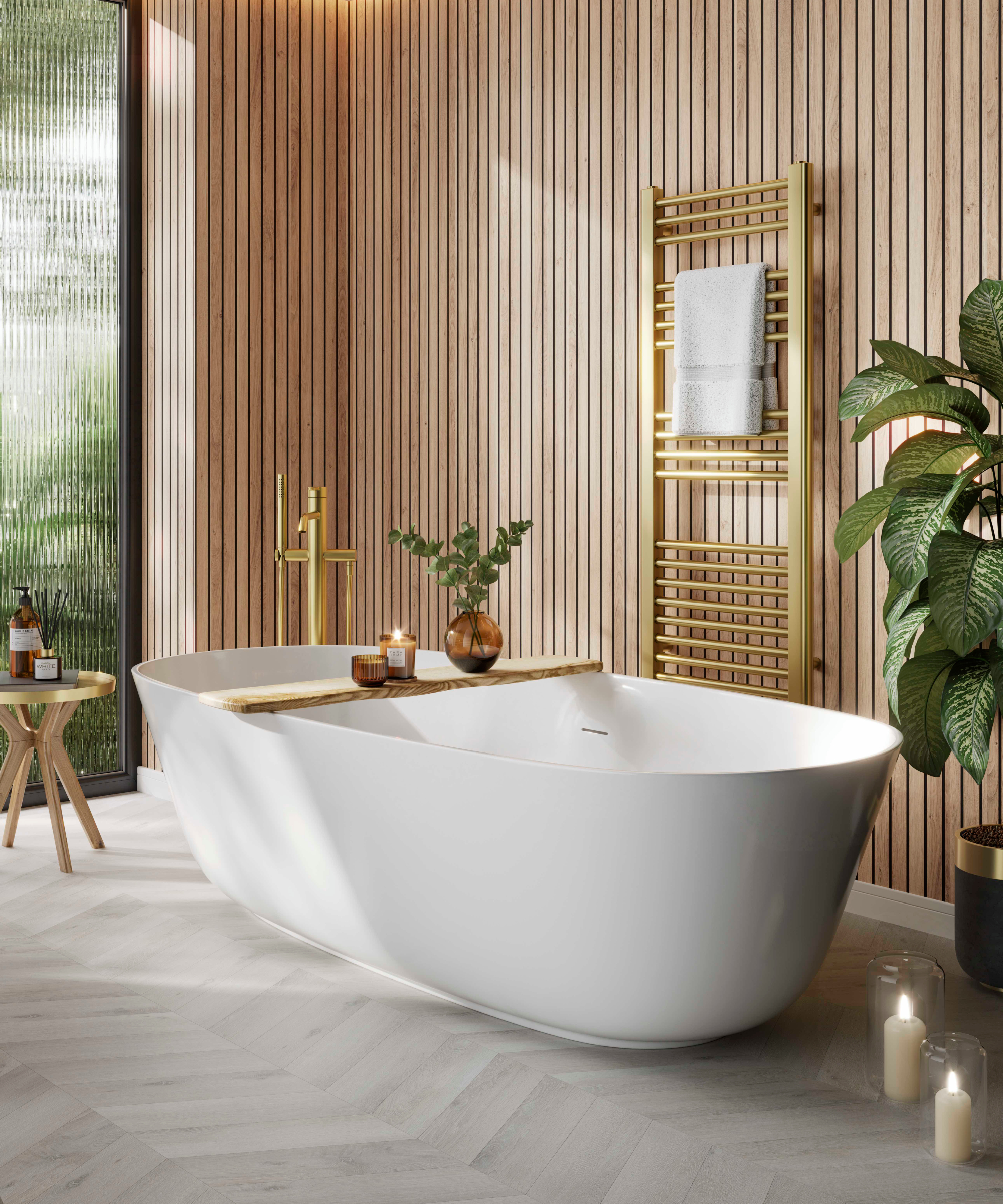
When looking to make a statement, a freestanding bath is hard to beat. Designed to stand alone without wall support or surrounding panels, these tubs bring an instant sense of luxury to a bathroom. From smooth, sculptural designs to more classic silhouettes, these bath types work just as well in modern schemes as in cottage bathrooms.
The advantages of freestanding baths
“Freestanding baths are one of the most visually appealing types of bath due to their unique and luxurious designs,” says Jamie Heath.
With a wide choice of materials, shapes and finishes now available, you don’t need a sprawling space to make one work. “Once upon a time, freestanding baths generally needed larger bathrooms to accommodate them, however, in recent years, there have been several launched to the market with much smaller footprints (around 1300mm+) so that homeowners don’t have to forgo the stunning focal point these types of baths provide,” explains Keeley Sutcliffe, design manager at BC Designs.
Freestanding baths are also available in a range of materials, too. Acrylic models are typically more affordable and easier to manoeuvre, while solid surface or metal baths offer superior heat retention and a more premium hotel-like feel.
Important considerations
While they are stylish, a freestanding bath will require more planning than standard built-in design. “They can need extra plumbing work, especially if the pipes have to be extended or repositioned,” says Jamie. And while they look fantastic in the middle of the room, they don’t offer the ledge space a fitted bath does, so you'll need to think about where your bath products will live.
“You should also consider the weight of your bath – especially if you’re choosing a metal or solid surface design,” adds Keeley. “Take into account how heavy it will be when filled with water and occupied. If in doubt, check with a builder or structural engineer.”

Keeley Sutcliffe is Brand Manager for award-winning British bathroom designers, BC Designs. Over the last 22 years, the company has expanded their range of freestanding baths to include both compact and spacious designs in luxury materials.
Roll top & claw foot baths
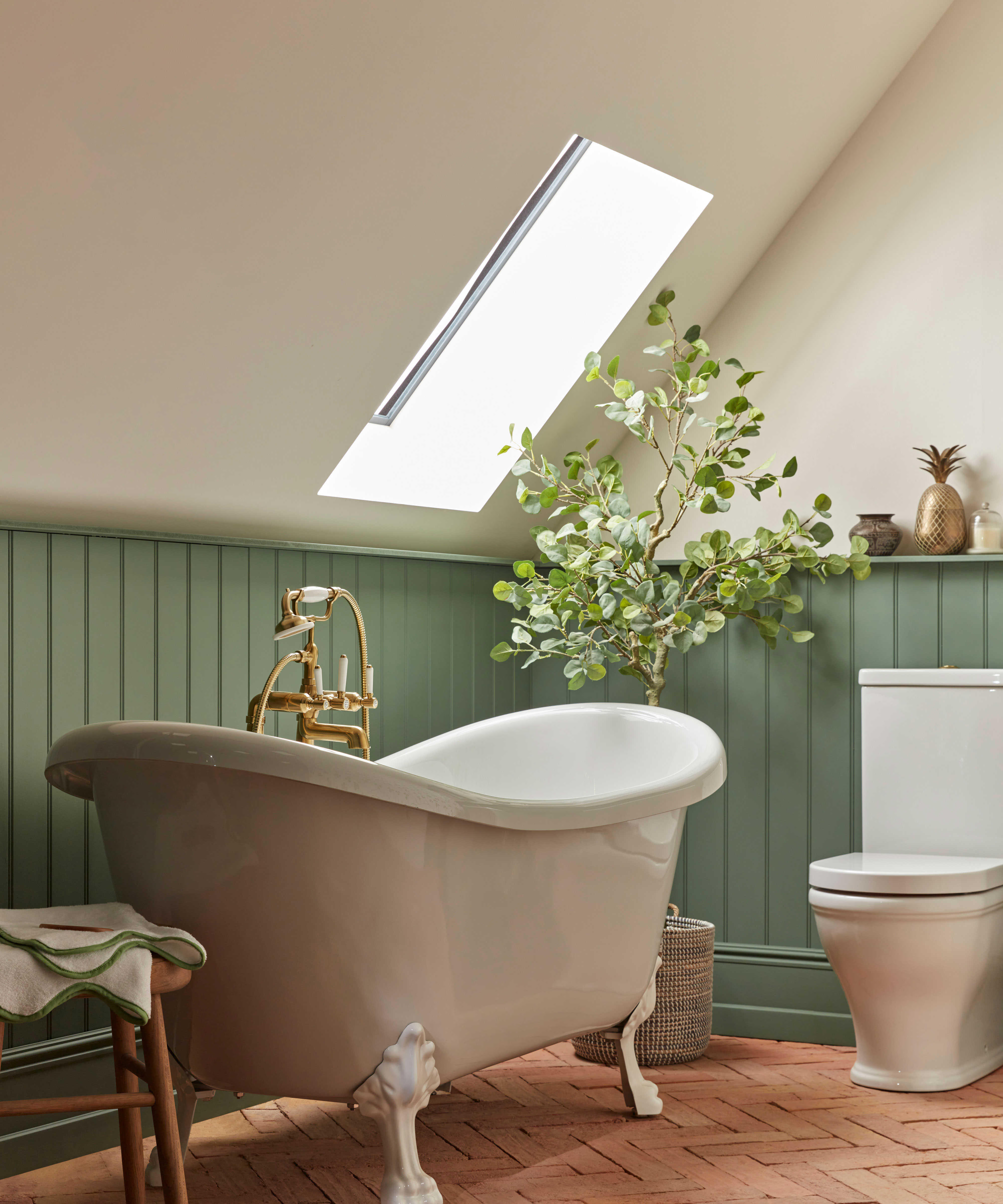
A roll-top bath is defined by its distinctive curved edge, giving the tub a soft and elegant silhouette. Traditionally made from cast iron and mounted on decorative 'clawed' feet, this classic style evokes the charm of a bygone era, though modern roll-top designs are now widely available.
The advantages of a roll-top bath
Roll-top baths are ideal for Victorian bathrooms or bathrooms with a heritage feel. They’re also increasingly customisable. “Painted roll-top and boat baths, where owners can choose any colour, are growing in popularity,” says Susan Roach, designer at West One Bathrooms Clerkenwell. “The ability to personalise your bathing experience is becoming a major trend.”
Important considerations
Due to their size and shape, roll-top tubs can feel imposing in smaller bathrooms. They often require more clearance space around them, and the exposed plumbing may need specialist fixtures to get the look right. As with any freestanding design, it’s also worth checking whether your flooring can support the weight, particularly if the bath is made from cast iron.

Susan Roach, Senior Designer at West One Bathrooms' Clerkenwell showroom, has 14 years of experience creating luxurious, bespoke bathroom designs, blending functionality with elegance to craft truly personal spaces for her clients.
Back-to-wall baths
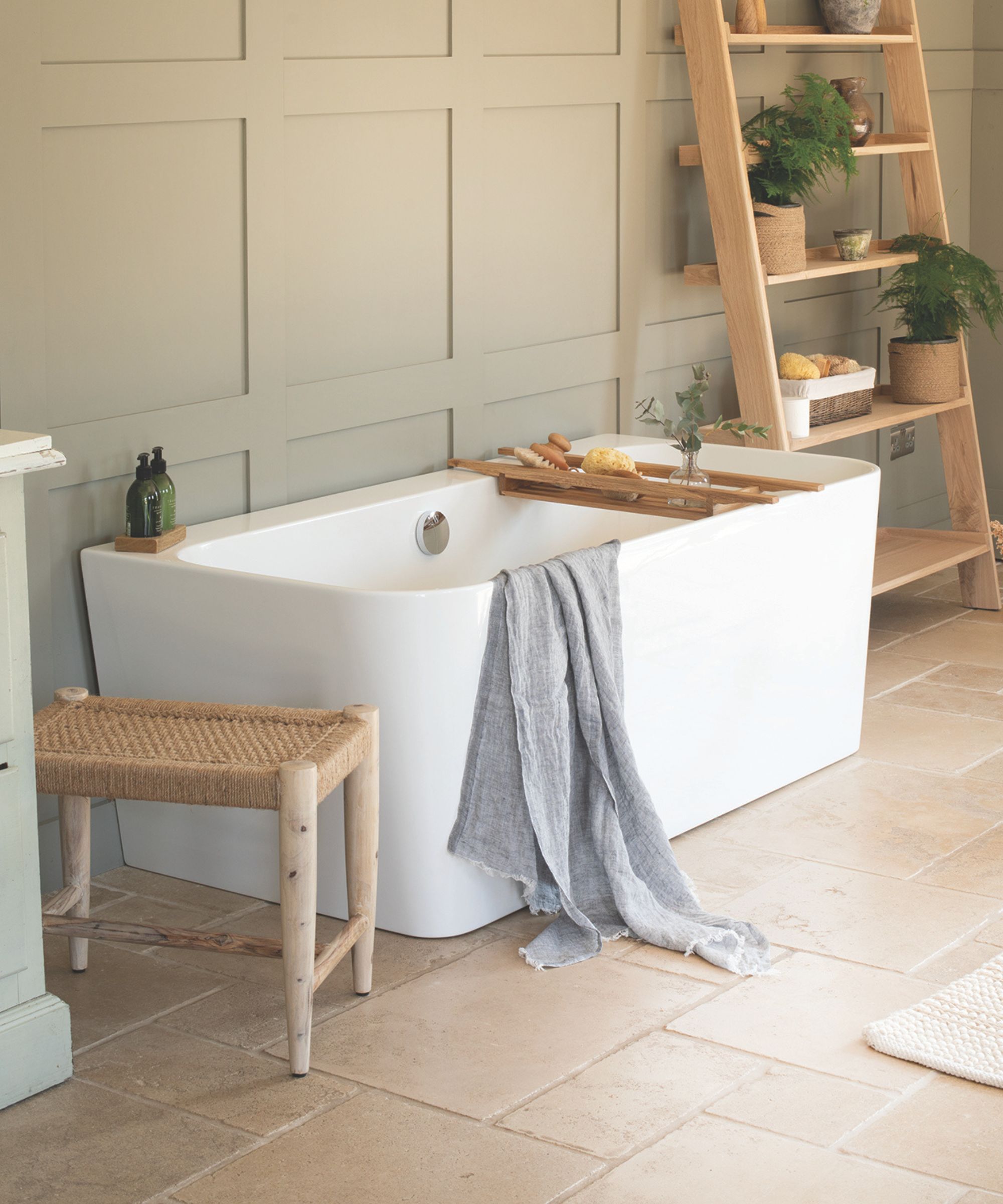
If you like the idea of having a freestanding bath in a small bathroom but you're not sure if you have enough space, a back-to-wall bath offers the best of both worlds. They have the elegant shape of a freestanding design, combined with the space-saving practicalities of an inset tub. One long edge is flat so the bath can sit flush against a wall, freeing up more floor space.
The advantages of a back-to-wall bathtub
“Back-to-wall baths are easier to position, making them a great option if you're short on space or want to fit your bath neatly against one wall,” explains Keeley Sutcliffe. “They also offer flexibility with bathroom tap choices – deck-mounted, floor-standing or wall-mounted, letting you pick which ones work best for you and your family.”
Important considerations
Unlike a fully freestanding tub, you’ll need to install a back-to-wall bath with its straight edge fixed in position, so it can’t be floated in the middle of a room. Still, the cleaner lines and easier access to plumbing make it a popular choice for bathroom renovators.
Inset baths
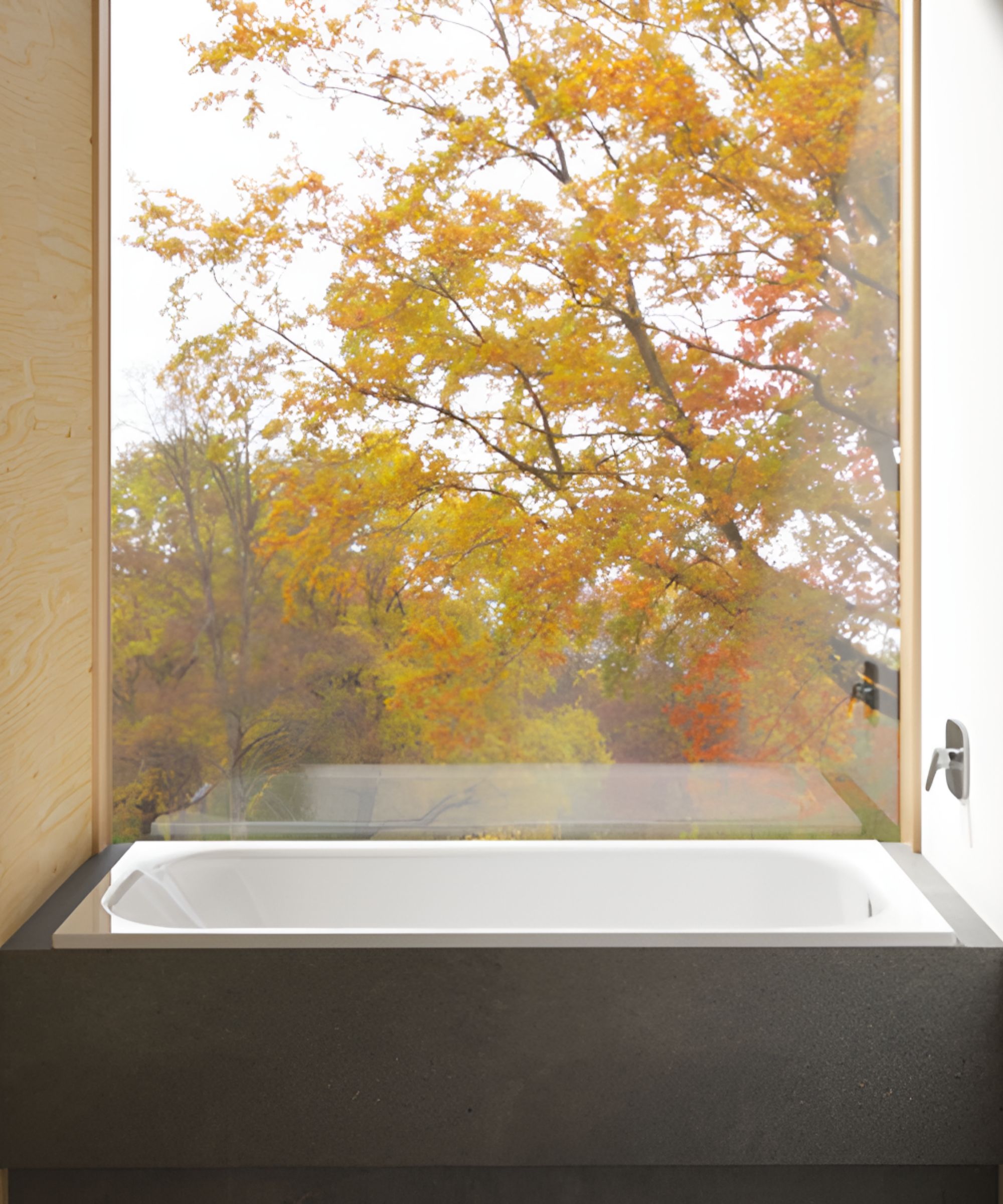
Inset baths – also known as built-in or fitted baths – are designed to slot neatly into a frame or recess, typically bordered by two or three walls. With their neat finish and efficient use of space, these types of bath remain a firm favourite in everything from small bathrooms to family-friendly layouts.
The advantages of inset baths
“Generally these baths are more affordable than other types of bathtubs and they can save a lot of space due to being tucked in corners or alcoves,” says Jamie Heath. “They offer easy access with big ledges on the side and the opportunity to install shelves beside the bath.”
Their simplicity doesn’t have to mean a lack of style. “Certain bath panels are now strong enough to be tiled,” adds Keeley Sutcliffe. “This opens up creative possibilities – you can blend your bath in with the walls or make it stand out with contrasting tiles.”
Inset baths are also well-suited to shower-over-bath setups, offering stability and splash protection where freestanding options might fall short.
Important considerations
While inset designs are brilliant for functionality, they don’t always deliver the same wow-factor as a freestanding tub. Because they are built in, they’re also less flexible when it comes to where you can position them in your bathroom.
Shower baths
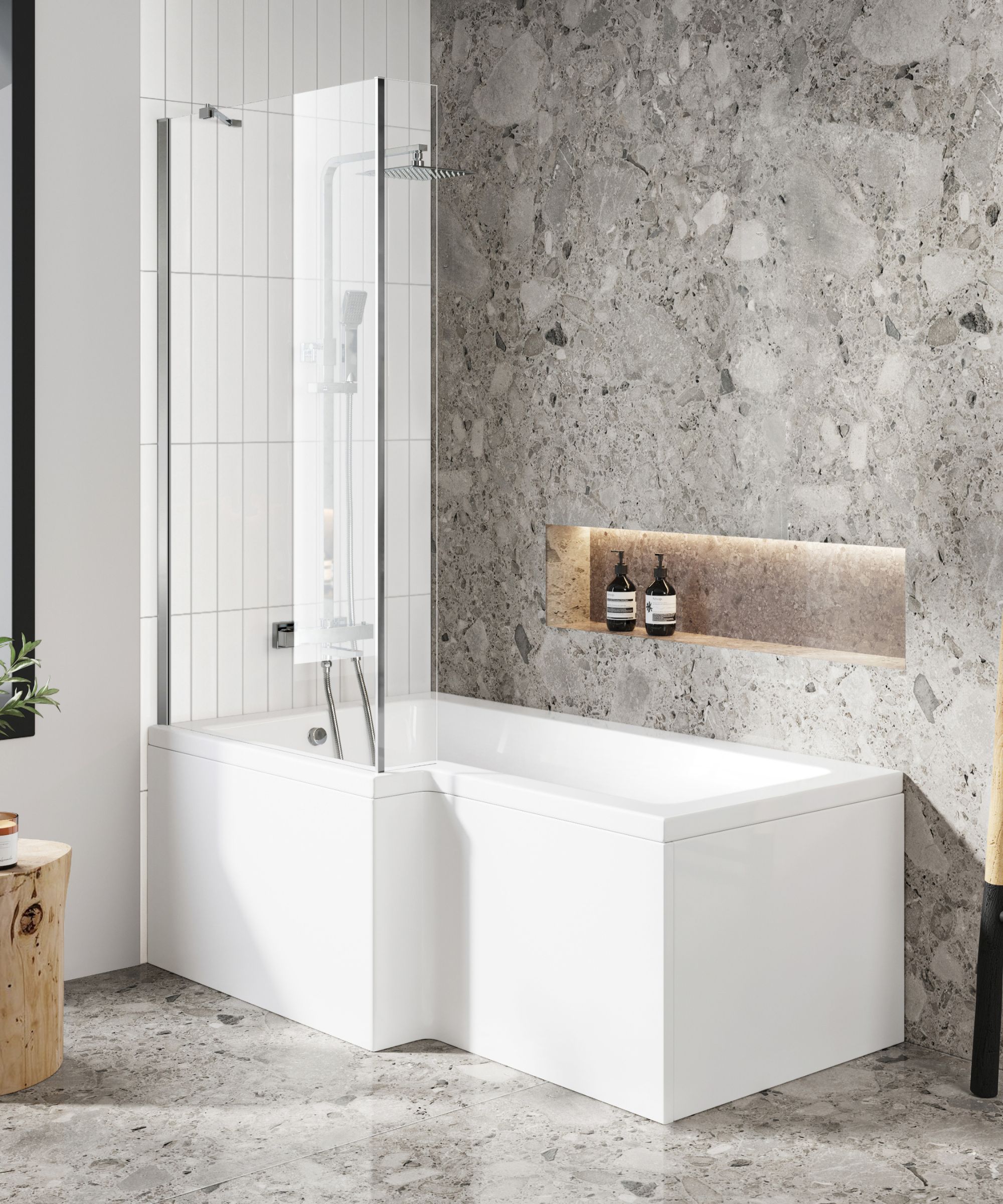
A shower bath offers the best of both worlds: the comfort of a long soak and the convenience of a standing shower. These hybrid designs are a smart choice if you're considering replacing a bathtub with a shower but would still like the flexibility of both.
The advantages of a shower bath
Designed with daily use in mind, these tubs are usually made from durable acrylic and come with a range of compatible screens to contain splashes and complete the setup. Shower baths often feature one end that’s slightly wider to give you more room to move when standing under the shower. This extra space is typically shaped into a soft curve or clean angle – known as a P- or L-shape – which helps to zone the area without taking up any more floor space than a standard bath.
“For families, having a separate bath and shower is ideal if space allows, as younger children are more likely to use a bath while older ones prefer showers. If space is limited, a shower-over-bath combination may be the best solution,” says Natalie Bird, brand marketing manager at Roca.
Considerations
While practical, shower baths are more about function than show stopping design. You’ll also need to ensure that the bath end you’re showering in has a flat enough base and suitable wall support for a screen or enclosure.

Natalie has nearly a decade’s worth of experience in the field of bathroom products, having worked for a plumber’s merchant and now Roca, a leading company in the design and production of bathroom furniture, brassware and sanitaryware.
Japanese soaking tubs
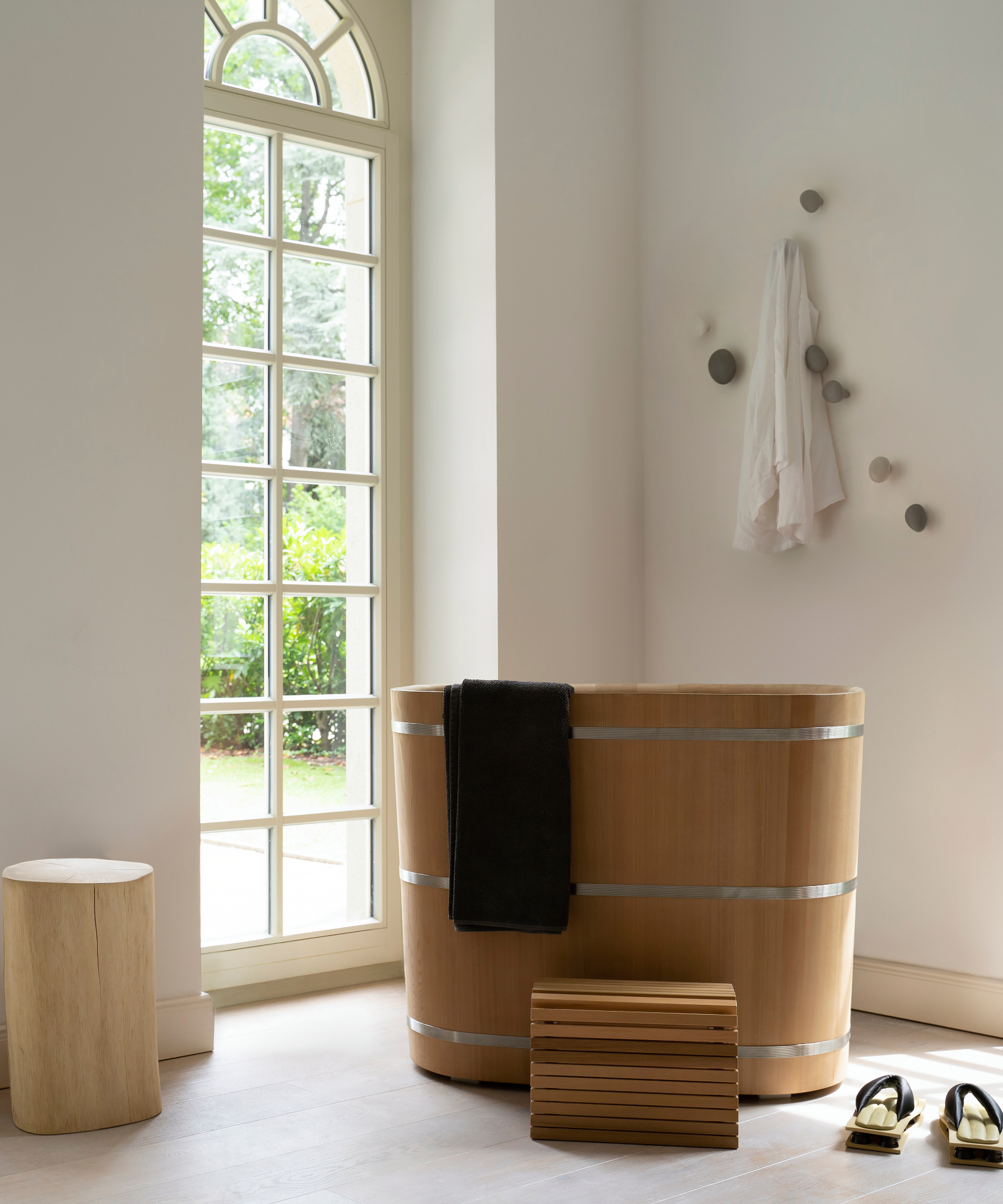
Japanese soaking tubs, or ofuro baths, are compact and deep, designed for a fully immersive soak while seated upright. Unlike traditional Western-style bathtubs, which favour a reclined position, these offer a more meditative and space-efficient way to unwind. They’re a key feature in many Japanese bathrooms, where relaxation and ritual are central to the bathing experience.
The advantages of soaking tubs
“Japanese soaking tubs are a great option for small ensuites, as their compact length allows for a separate bath and shower area, which might not be possible with a standard 1700mm bath. They also feature a built-in seat, making them comfortable for relaxing, shaving or even reading,” says Natalie Bird, brand marketing manager at Roca.
Important considerations
Soaking bathtubs can be more expensive and harder to source than standard models, and the upright posture won’t suit everyone. If you prefer to recline in the bath, this style may not offer the same comfort. It’s also worth noting that installation may require custom joinery or flooring adjustments, depending on the model.
FAQs
How do I choose the right type of bath for my bathroom?
Choosing the right bath starts with assessing the size and layout of your bathroom. In smaller rooms, an inset bath or soaking tub can help you save space without compromising comfort. In larger family bathrooms, a separate shower and bath is ideal, though a shower-over-bath is a practical solution where that isn’t possible.
Think about who will be using the bathtub. Families often benefit from built-in designs with ledges and easy access, while able-bodied adults may prioritise comfort and depth.
Material choices will also play a role. "Acrylic remains a firm favourite, as it's lightweight, cost-effective and retains heat well,” says Jamie Heath at Build & Plumb. “But it’s worth looking for reinforced or double-skinned options for added quality.”
If you’re looking for something more substantial, metal and solid surface tubs are both worth exploring. Solid surface baths – made from a blend of natural minerals and resins – are highly resistant to scratches and stains. Cast iron, a classic metal option, offers excellent heat retention and durability, though it comes with more weight and a higher price tag.
“Metal baths can also be recycled once they’ve reached the end of their life, which makes them a great option if you’re trying to make more sustainable choices,” adds Keeley from BC Designs.
How do I choose the best location for my bath?
Plumbing access should always be part of your planning. “It’s important to consider where your pipes and plumbing are located,” explains Jamie Heath from Build & Plumb. “Ideally, you’ll want to choose a position close to your bathroom’s existing pipework – but it’s always worth checking with your plumber before you buy.”
Updating your bathroom with a new tub is a great way to transform the space, but if you're concerned about new bathroom costs, consider handling some of the preparation tasks or bathtub installation yourself.
Get the Homebuilding & Renovating Newsletter
Bring your dream home to life with expert advice, how to guides and design inspiration. Sign up for our newsletter and get two free tickets to a Homebuilding & Renovating Show near you.

Gabriella is an interiors journalist and has a wealth of experience creating interiors and renovation content. She was Homebuilding & Renovating's former Assistant Editor as well as the former Head of Solved at sister brand Homes & Gardens, where she wrote and edited content addressing key renovation, DIY and interior questions.
She’s spent the past decade crafting copy for interiors publications, award-winning architects, and leading UK homeware brands. She also served as the Content Manager for the ethical homeware brand Nkuku.
Gabriella is a DIY enthusiast and a lover of all things interior design. She has a particular passion for historic buildings and listed properties, and she is currently in the process of renovating a Grade II-listed Victorian coach house in the West Country.
